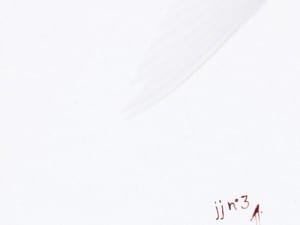Headphones have gone further than music. Now they’re about fashion and style,
and maybe even art as well. Here’s how it happened – and where it’s all going.
As audiovisual editor of the website Digital Trends, Caleb Denison is arguably one of the foremost authorities on sound technology working today. Every year, he reviews hundreds of speakers, audio components and headphones. When it comes to technology, he’s used to people paying attention to exactly everything that he has to say. So when his young son didn’t want his advice on headphones, it came as something of a surprise.
His son wanted a pair of Beats By Dre headphones – something which Denison was not best pleased about, being an expert on sound. The expensive headphones, made by Monster and endorsed by hip-hop god Dr. Dre, were the in demand model at the time, and it drove Denison nuts. He just could not understand: “I brought home a pair of Sol Republic headphones one day,” he says. “Very few people had any idea who they were. I said ‘Check these out,’ and he said, ‘They’re nice, but I really want Beats By Dre!’”
It’s easy to imagine Denison slowly banging his head against the wall. “I said, ‘Why? Why? Why do you want Beats By Dre when everything I told you should tell you that you don’t want these headphones? These Sol Republics – you’ve got them before anyone else. Your old man doesn’t seem cool to you, but these are going to be the new cool headphones.’ He wasn’t having any of it.”
This conversation between Denison Senior and Junior wouldn’t have happened five years ago, but headphones have done something extraordinary. They’ve gone beyond function and become almost all form. A pair of headphones in 2013 is a fashion statement; a piece of art that forms its own iconography. It says as much about you as your jacket, or the picture hanging on the wall in your flat. In many ways they have become another extension of overt self-expression, befitting current trends in popular culture. Their manufacturers have become arbiters of cool. Fashion houses like Marc Jacobs and Diesel have their own models, and colourful custom designs have exploded.
They’ve become a huge business: last year, the firm Futuresource Consulting estimated that global sales totalled over £3.8 billion – a staggering 20 percent more than sales in 2011, coming from around 260 million units sold worldwide.
It’s easy to see how this happened. It all comes back to the Beats By Dre cans that Denison’s son lusted after. The story is almost old hat by now: cable maker Monster teams up with Dr. Dre and his label buddie Jimmy Iovine to create a pair of headphones that becomes one of the hottest items on the planet. No other make of headphones had ever been this successful before.
Since then, artists have fallen over themselves to get involved. Lady Gaga, 50 Cent, Ludacris and others all have their own cans from various companies. Justin Bieber has a signature pair. The Beats By Dre brand turned the youth market on to headphones, and while they’re no longer the most fashionable or exclusive brand out there, they deserve all the credit – if credit is, in fact, what they should get. Of course, there is no way a pair of Diesel headphones is going to sound as good as a pair from a company like Beyerdynamic or Audio Technica, who have been making music sound good for decades. Diesel isn’t a headphone manufacturer. It is a fashion brand. If you were to line up every pair of headphones available right now, you’re almost certain to pick a pair that looks fantastic but sounds average. That’s the biggest criticism you can level at headphones being sold right now: they cheapen the music. They’re kind to songs for the radio, engineered for loudness, and alien to any form of subtlety.
You can hardly blame them – for the most part, it’s what their target markets are listening to. “With manufacturing in China being the way it is,” Denison says, “it’s easy to take something ‘off the shelf’ and design and brand it. While I can’t blame anybody for wanting to cash in on this exploded marketplace and get a piece of that, I think there are some manufacturers out there who care more about a business opportunity than making a quality sounding product.”
But then again – and this is the kicker – why shouldn’t headphones look good? They’re a very obvious accessory, whether worn on the head or draped around the neck, and there’s no reason why they shouldn’t link with your own personal style. “The Monster event at the 2013 Consumer Electronics Show was, to all intents and purposes, a fashion show,” says Denison. “They had many celebrities on hand who don’t necessarily have anything to do with the fashion world, but the way they ran it was like a high fashion show. They were walking the runway, and they were dressed to match the headphones they had.”
Some companies have taken this to its logical conclusion. After all, if you’re not happy with the styling of the headphones available in shops, there’s nothing stopping you designing your own.
Jason Rhys-Thomas runs Custom Cans, a Cheltenham-based company that does just that. A DJ and electronics student, Rhys-Thomas saw a gap in the market and founded the company in 2009. He’ll take your headphone order and your design ideas, then he and his team will take the cans apart. They’ll set the electronics to one side, then airbrush and paint the shells, coating them with a scratch-resistant lacquer before putting it all back together. Whether you want a simple custom paint job or a pair of headphones with lasers attached, as one client did, Rhys-Thomas and his team can probably create your ideal pair.
“It’s a bit like with designer handbags,” he says. “You pay a fortune to get the right label on there, and they’re probably not built much better than the high street equivalent. You pay a lot for the name, and if you’ve gone from the little ones that have come free with your MP3 player, a lot of people might not have had a listen to other headphones. They’re perfectly happy with them.”
Rhys-Thomas and Custom Cans open up another facet of the debate. When does a pair of headphones go from high fashion to something considered to be art? It’s easy to visualise some of the Custom Cans designs being exhibited in a gallery space, after all, and the line between fashion and actual pieces of art has thinned increasingly as designers push what is possible.
The real problem is when manufacturers start equating the sound quality and style of their cans. The House Of Marley, a UK manufacturer that builds headphones based on the reggae singer Bob Marley, uses eco-friendly wood in its designs. Although the company doesn’t go as far as to state that the wood improves the sound, it’s certainly implied in its marketing material.
But if the wood does have any acoustic qualities, they’ll be unwanted – at least in a pair of headphones. Unlike a set of speakers, the material in headphones has to be acoustically inert – you don’t want it colouring the sound. The Marley range might look, and in some cases even sound, good, but it would be a mistake to equate its wooden charm with excellent audio.
As for what’s next in the world of headphones, simple economics states that the bubble has to burst sometime. With a market as saturated as it is, there will inevitably be some casualties. Both Denison and Rhys-Thomas think that those brands that continue to falter on their sound quality won’t survive; Rhys-Thomas even says that Custom Cans are beginning to see more requests for high end models. “We had our first order of more than £1,000 the other day,” he says.
Perhaps it’s the intangible things that make the new headphone styles so exciting – the increased time people spend listening to music, or the raised profiles of the artists who put their name to a pair. One thing is for certain: everywhere you turn these days the masses are embracing this new trend. “It’s getting people listening again,” Denison says. “That’s a very good thing. Dismissing a product because it doesn’t have the engineering experience behind it of Sennheiser or Audio Technica does not necessarily disqualify it. I think it’s great that people are looking to put a fashionable twist on headphones.”
For more information on Caleb Denison and Custom Cans, please visit www.digitaltrends.com and www.customcans.co.uk.
Rob Boffard





